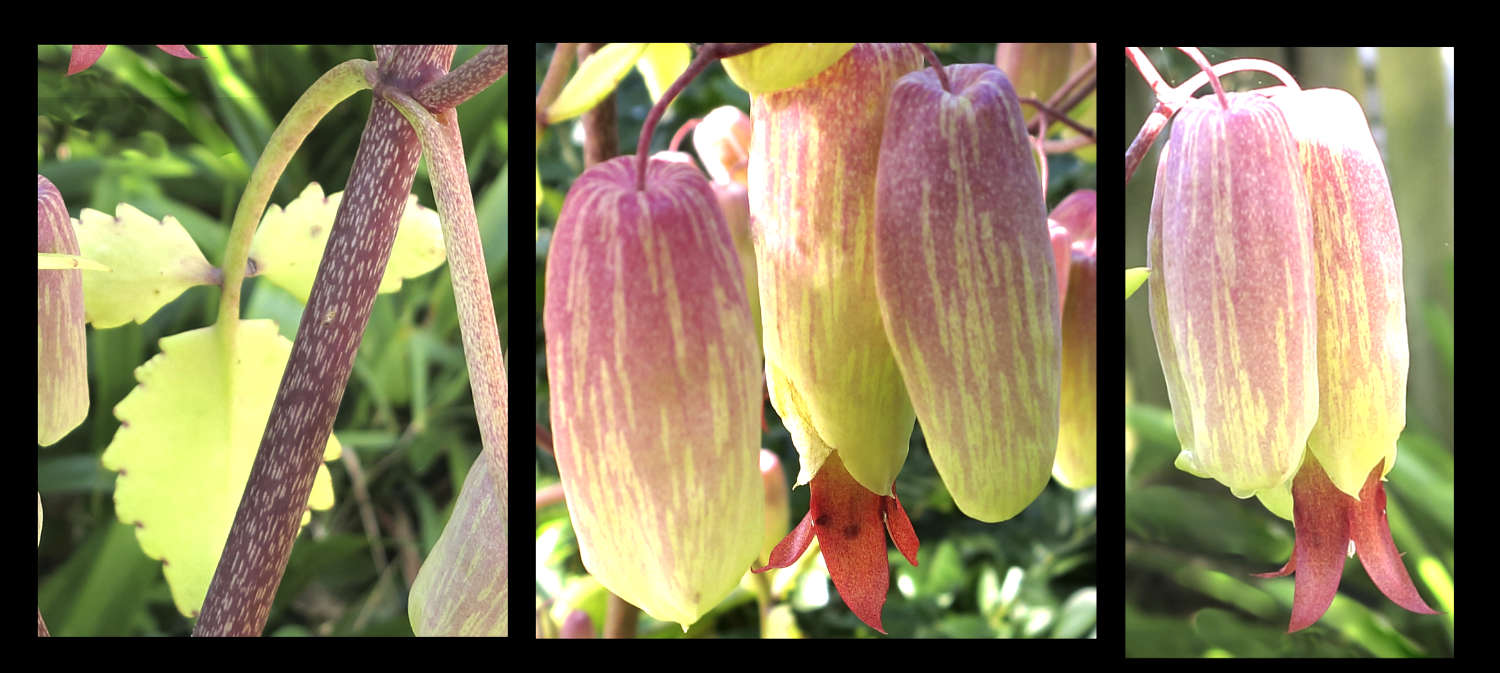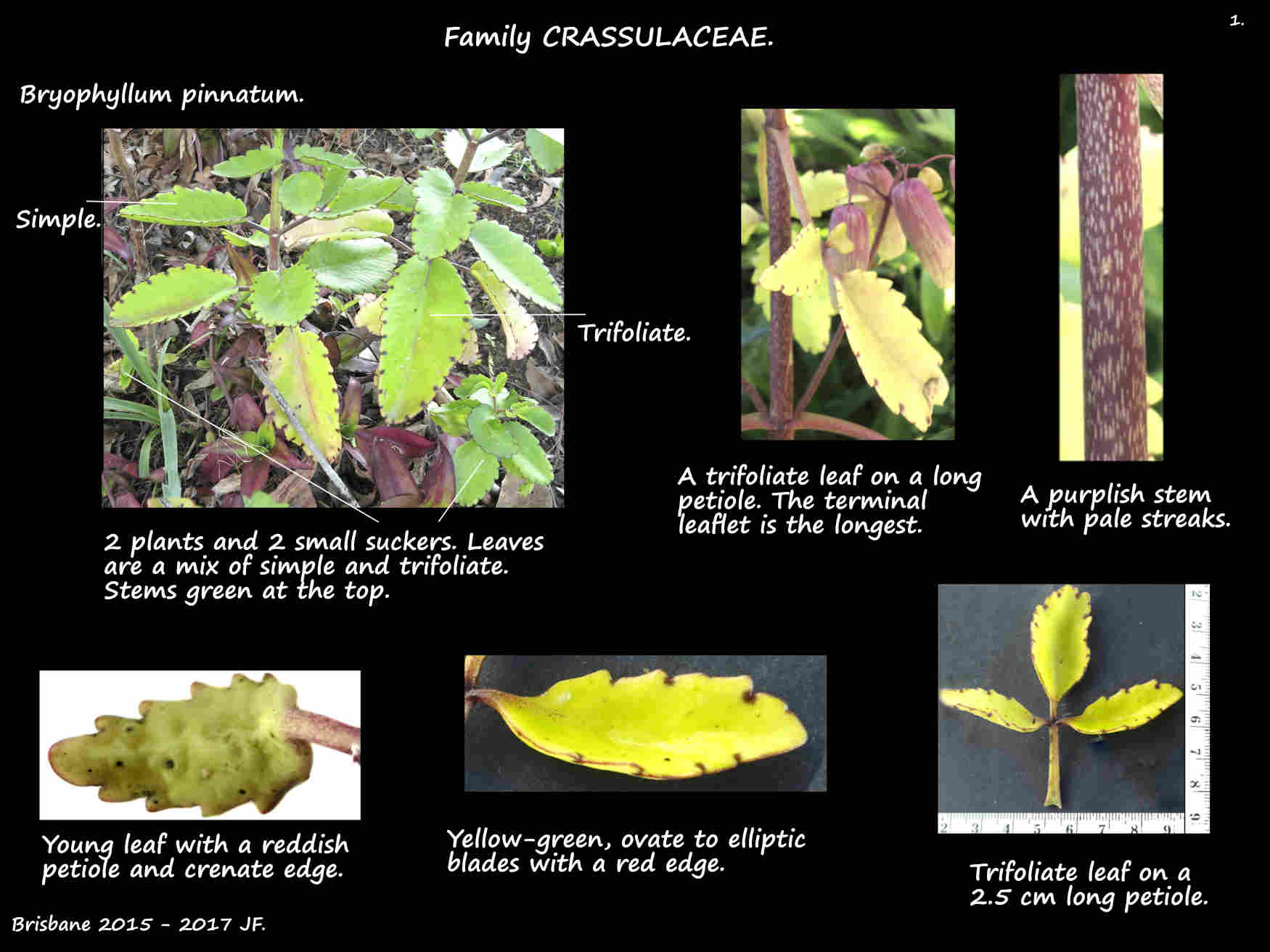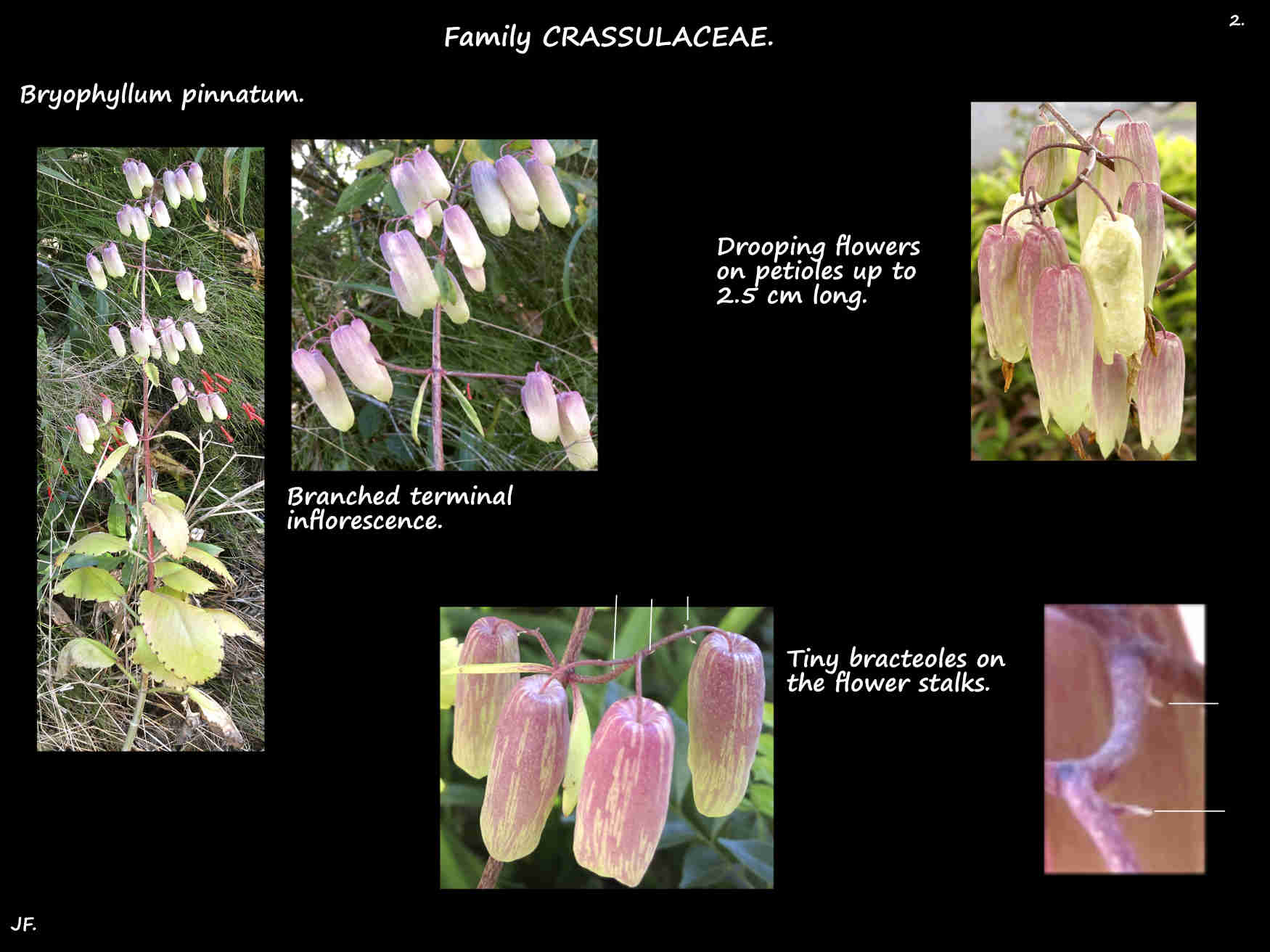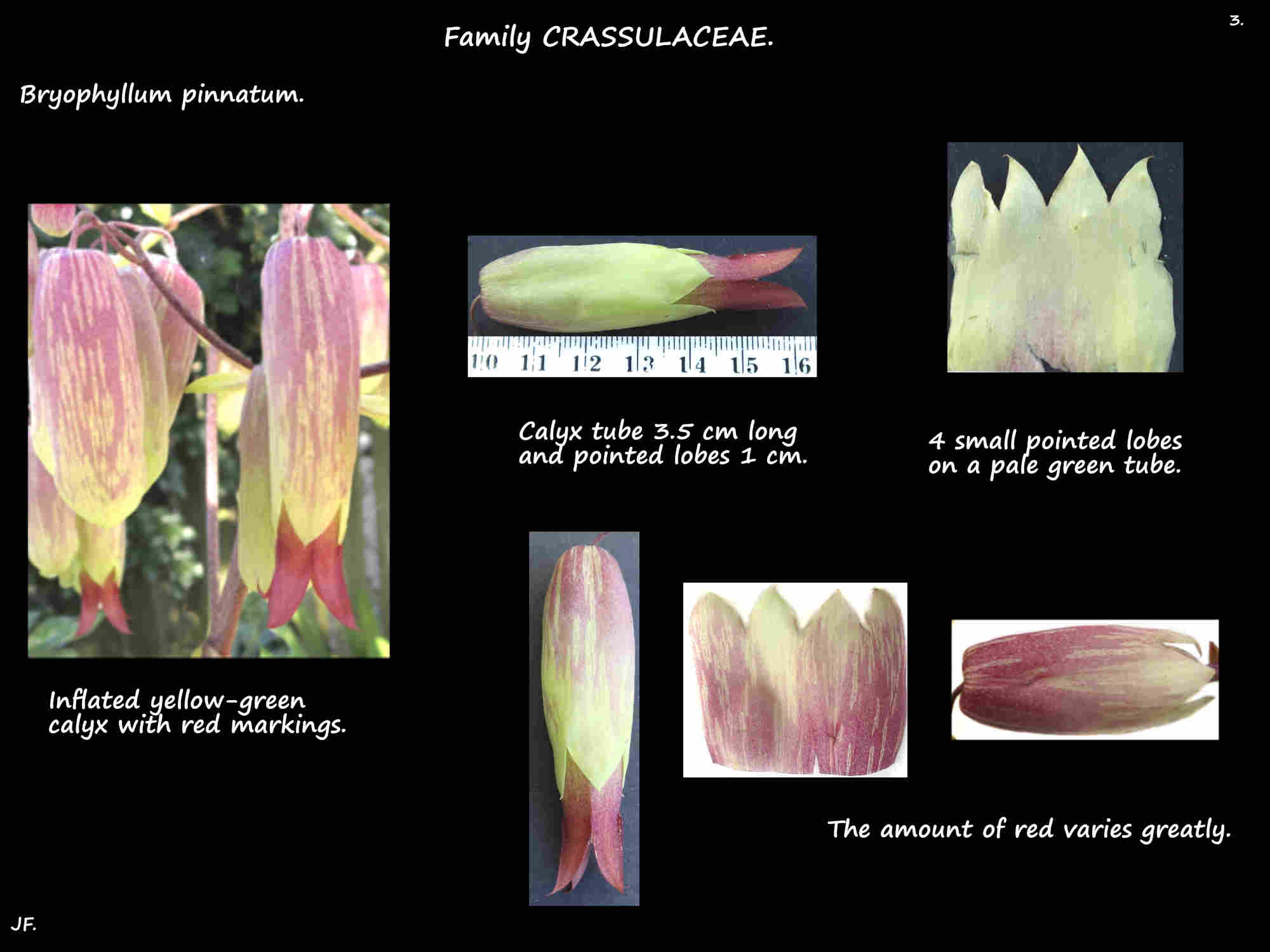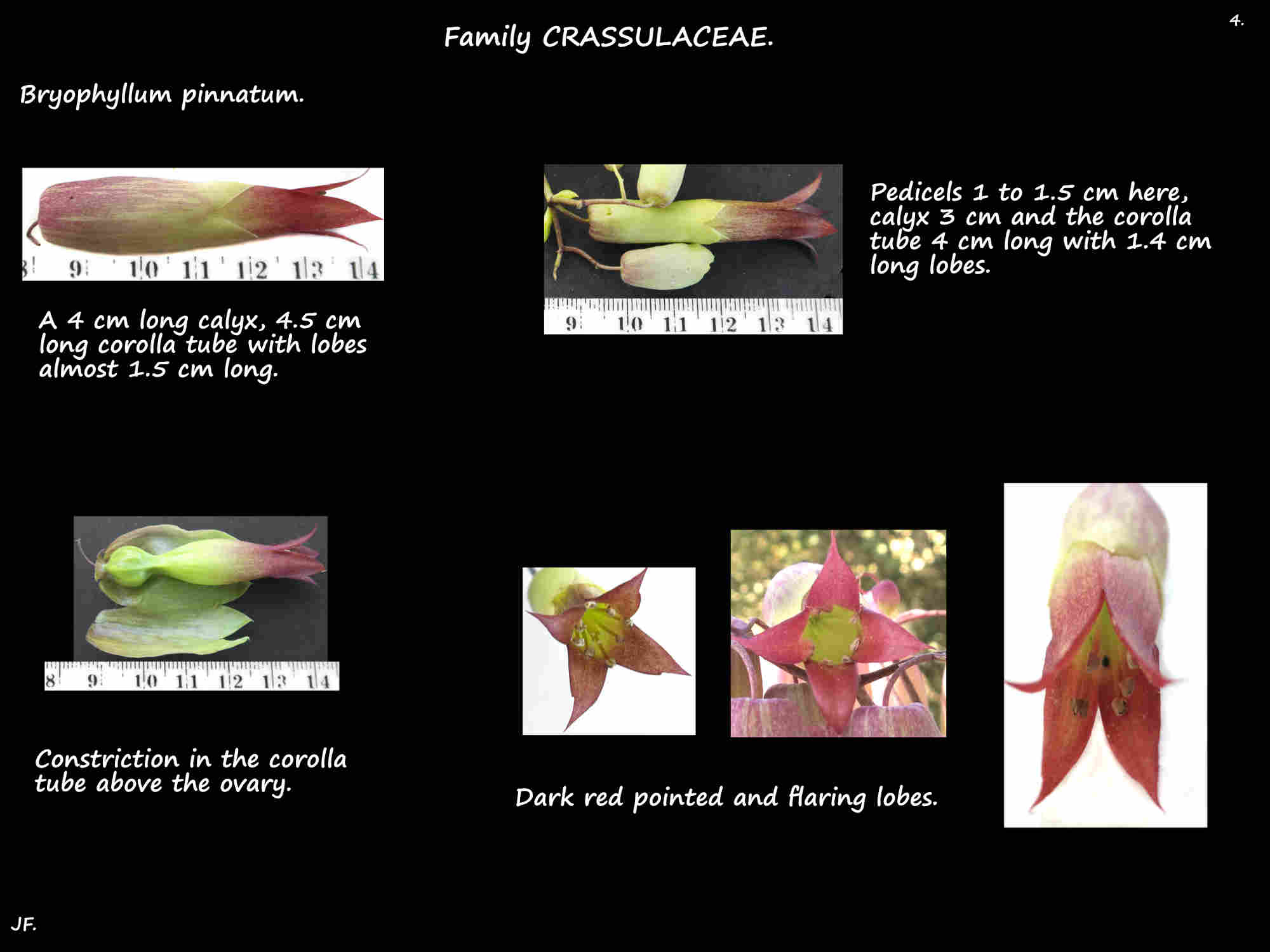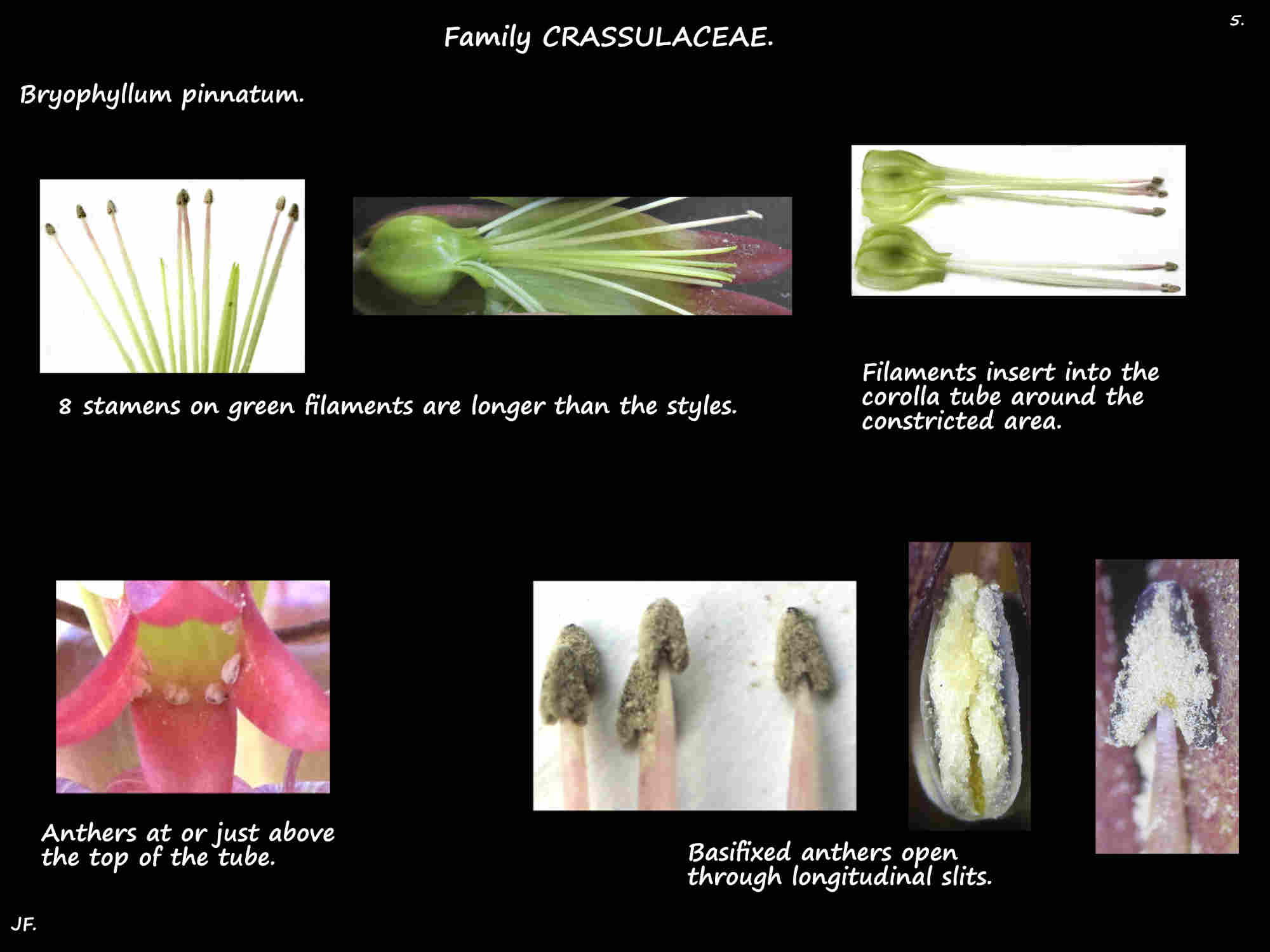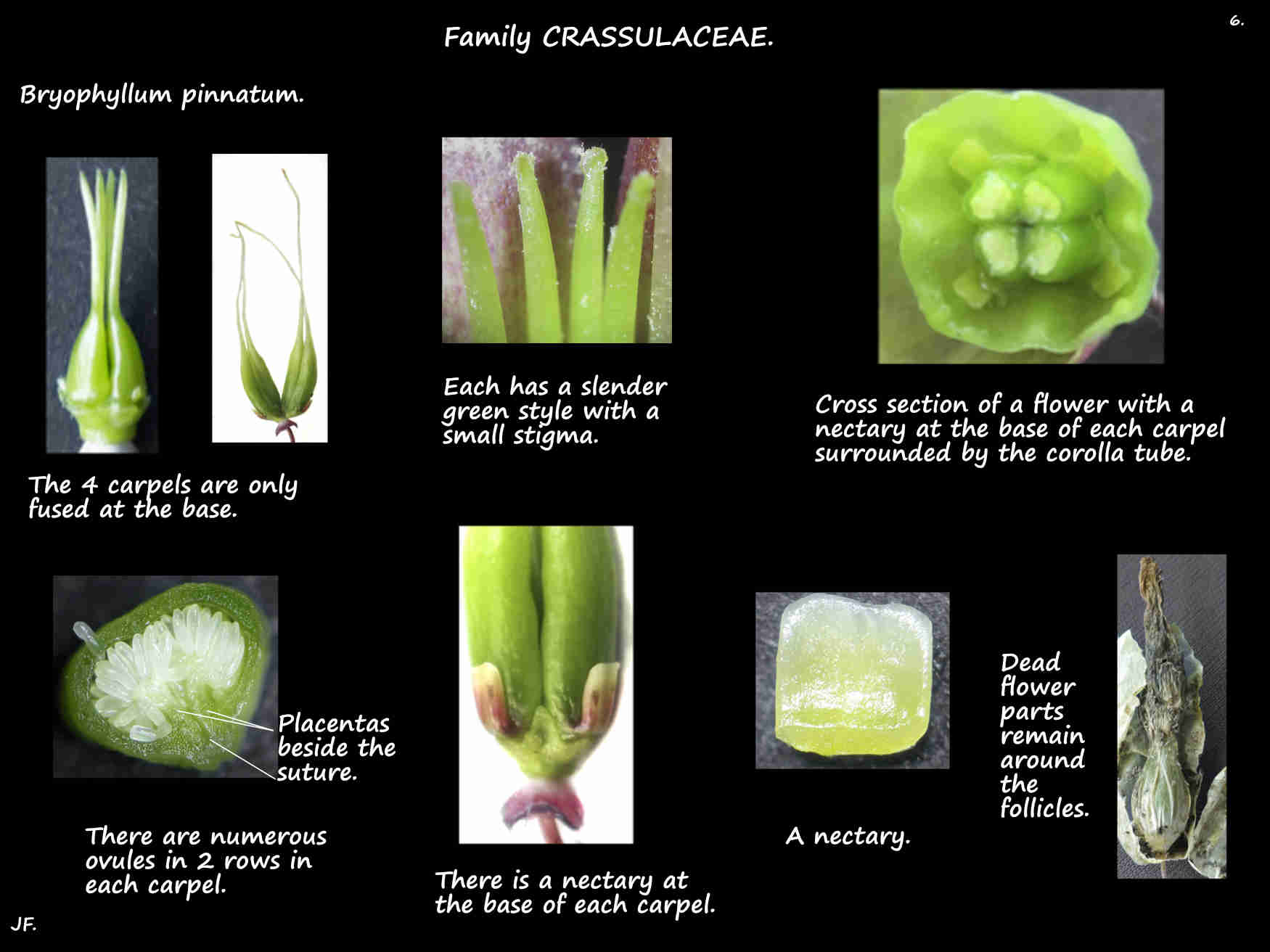Bryophyllum pinnatum.
The Resurrection Plant is also known Kalanchoe pinnata as well as older Bryophyllum, Kalanchoe,
Cotyledon and Crassula synonyms.
It is naturalised in S.E. Queensland where it is an environmental weed.
It used to be fairly common in gardens but is less often seen now.
They are erect succulent plants up to 1 or 2 m high.
The smooth round stems are green when young but reddish-purple with pale streaks when older.
Apart from the inflorescence, stems rarely branch and plants sucker from the base forming clumps.
Succulent leaves, on petioles up to around 8 cm long are oppositely arranged.
Leaves are a mix of simple and pinnate sometimes even at the same node.
Simple leaves can be up to 25 cm long and 14 cm wide.
Pinnate leaves have 3 or 5 leaflets with the terminal one being the largest.
The terminal leaflet is on a short petiolule while the lateral ones are more or less directly attached.
Leaves and leaflets are all flat, ovate to elliptic and with a crenate (small lobes) edge.
Plantlets can develop in the notches on the leaf margin.
This can occur on the plants but more commonly on fallen leaves.
Terminal inflorescences, over 50 cm long are branched clusters of drooping flowers.
The bell-shaped flowers are on a petiole up to 2.5 cm long with small bracteoles.
Flowers, with parts in 4’s are up to 7 cm long.
The inflated tubular calyx has the sepals mostly fused with pointed lobes.
Up to 4 cm long it is pale green or yellowish-green with varying amounts of red areas and streaks.
The tubular corolla, up to around 5 cm long is constricted above the ovary.
The pointed flaring lobes are around 1 to 1.5 cm long and 0.6 cm wide at the base.
Petals covered by the calyx are green while the exposed areas become a deep red.
The 8 stamens are inserted onto the constricted area of the corolla tube.
Around 4 cm long the anthers lie in or just above the top of the tube.
Basifixed anthers open through longitudinal slits.
The 4 green carpels in the superior ovary are only slightly fused at the base.
Each has numerous ovules in 2 rows and a style with a small stigma.
The fruit consist of 4 follicles up to 1.5 cm long enclosed in the dead flower parts.
Each follicle opens down the suture facing the central axis releasing many brown seeds under 1 mm long.
J.F.
